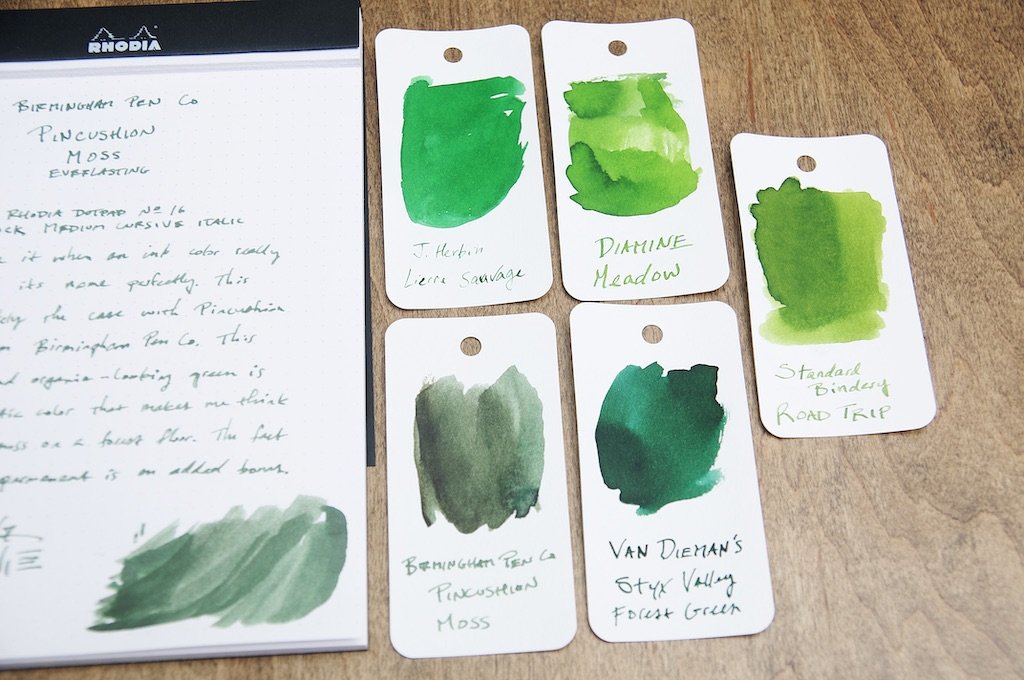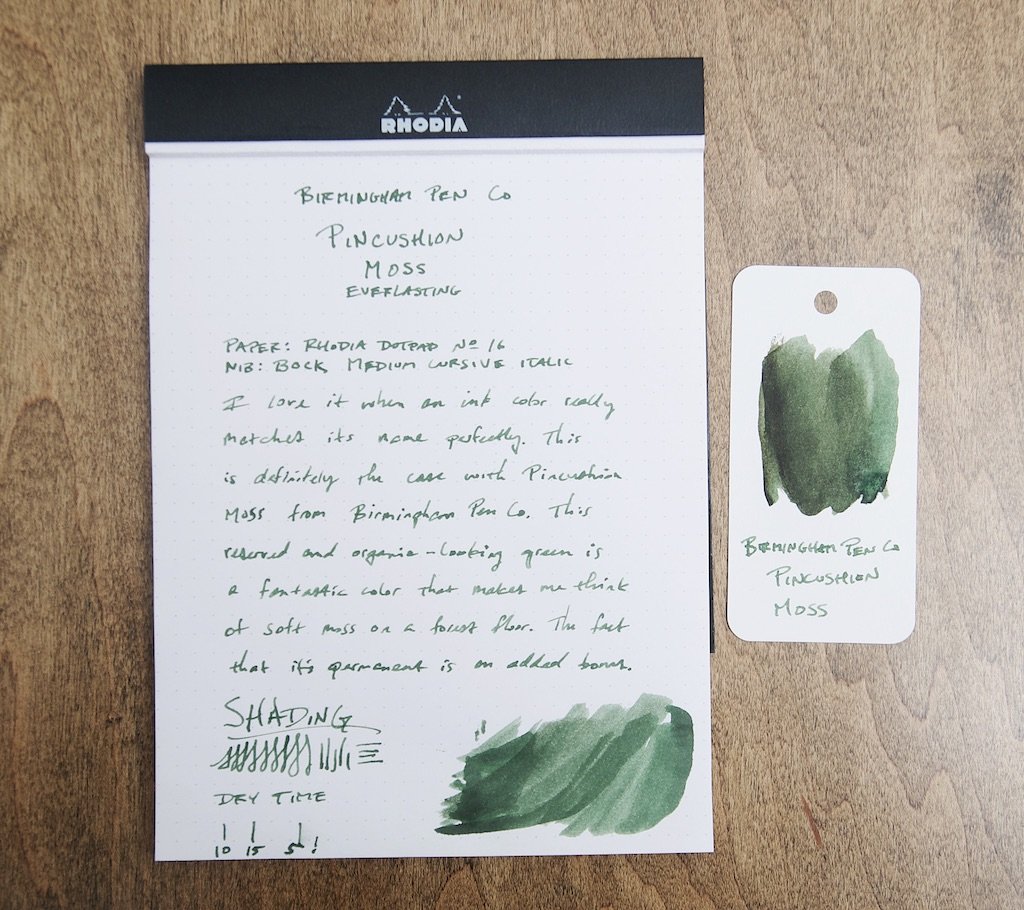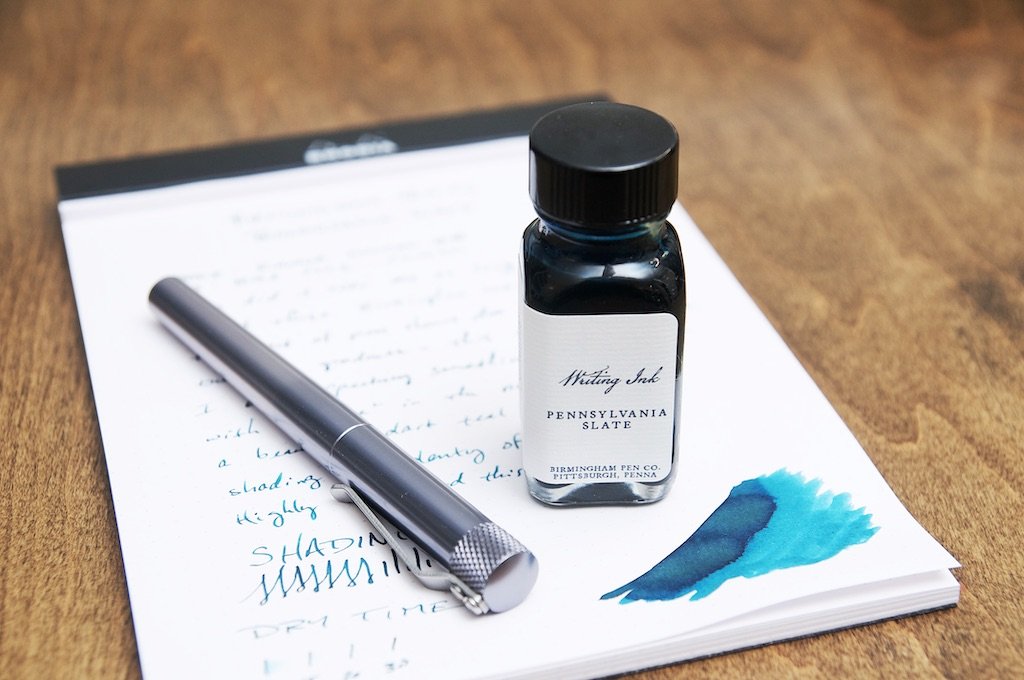Everything else about this ink is top notch. It flows well, it doesn't have any bleeding or feathering issues, and it actually dries pretty quickly. With normal writing with a medium cursive-italic nib, most lines are dry between 10 and 15 seconds. Not bad!
The ink does a good job of flowing after sitting for a while in a closed pen or even after a minute or so of being unused and uncapped. Likewise, it cleans out quickly and without any fuss.
Even better, this uses Birmingham's own "Crisp" ink formula that touts excellent performance on a range of different paper types and qualities.
I'm not one that normally cares a whole lot about packaging and presentation, but I will say that the Birmingham ink bottles are quite attractive. They apparently pour, seal, and label each bottle by hand. I just know it looks good sitting on my desk and ink shelf.
Pennsylvania Slate is available in 30ml, 60ml, and 120ml bottles for $13, $16, and $19 respectively. If you know you want a lot of one ink color, the large bottle is an incredible value! Regardless of size, you owe it to yourself to try out some of the inks that Birmingham Pen Company offer. I know I'll be adding several more to my list for the near future, and I look forward to seeing some more options in person at the next pen show I attend.
(Birmingham Pen Co. provided this product at no charge to The Pen Addict for review purposes.)














